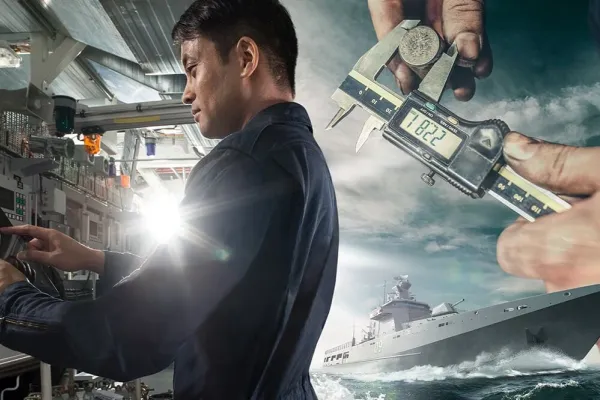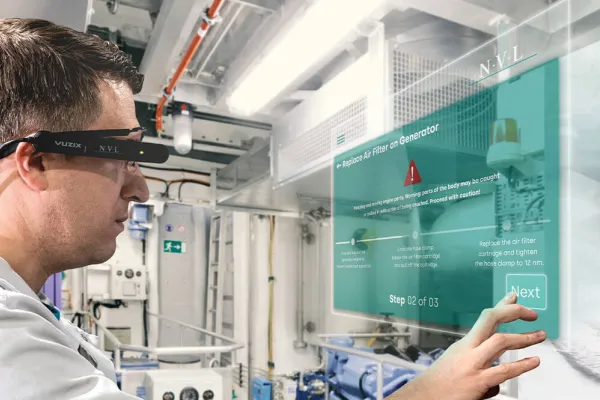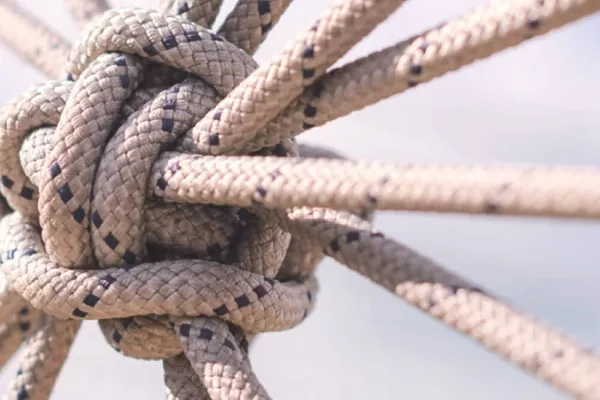OUR MILESTONES

A REPUTATION BASED ON SUCCESS
We take pride in our heritage and continuously strive to remain pioneers of innovative solutions while combining product quality and affordability. Since our beginnings in the late 1870s, we have launched more than 1,000 naval vessels and coastguard vessels at our shipyards and have built and repaired ships for both the German Navy and fleets in over 50 countries.
As we strive towards the future, we continue to build reliable naval vessels for customers around the globe. We take pride in our high quality standards and working together as a team with our customers and between our shipyards for best results. Whatever the requirement or the budget, we remain flexible and provide tailored naval solutions from a single source. The breadth of our expertise is demonstrated by our portfolio, ranging from fast patrol boats and offshore patrol vessels to corvettes, frigates, mine countermeasure vessels and logistic support ships.
The timeline below provides a brief selection of vessels completed at our new build shipyards Blohm+Voss (Hamburg) and Peene-Werft (Wolgast) as well as our heritage shipyards of Fr. Lürssen Werft (Bremen), which today is dedicated solely to yachts. It also shows a number of vessels that are currently under construction within NVL.

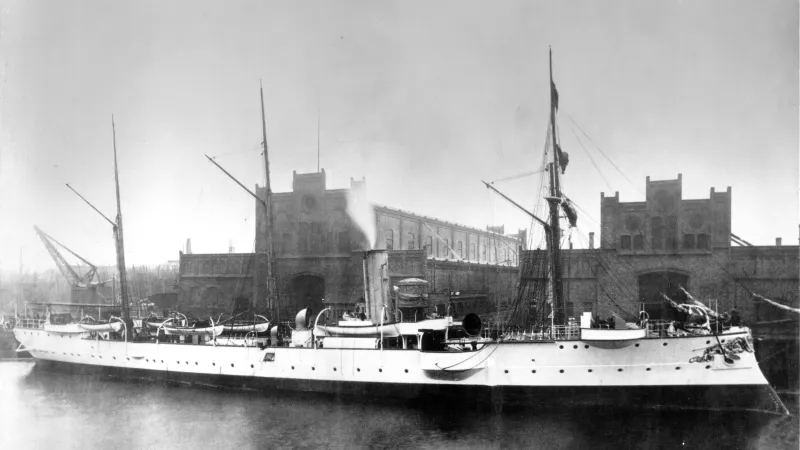
1892
The non-armoured light cruiser SMS CONDOR was the first naval vessel built by Blohm+Voss. Its hull was completely riveted, and the ship was propelled by two triple-expansion steam engines. To save coal when the wind was fair, the ship was additionally equipped with sails. Besides a ram bow, the CONDOR was armed with 10.5 cm guns to be able to fulfil its duty as a guard ship.

1912
The turbine-powered battle cruiser SMS GOEBEN was built for the Imperial German Navy and equipped with four propeller shafts. New methods were employed to avoid vibration and noise. Particularly noteworthy aspects were the low coal consumption, which remained below the contractual estimate, as well as the achieved top speed of 28.4 knots. The vessel was later transferred to the Turkish Navy and remained in operation until 1973 as the longest-serving dreadnought-type ship in any navy.

1930
The Lürssen S1 is the first German prototype of an advanced fast patrol boat and the first one built by Lürssen.
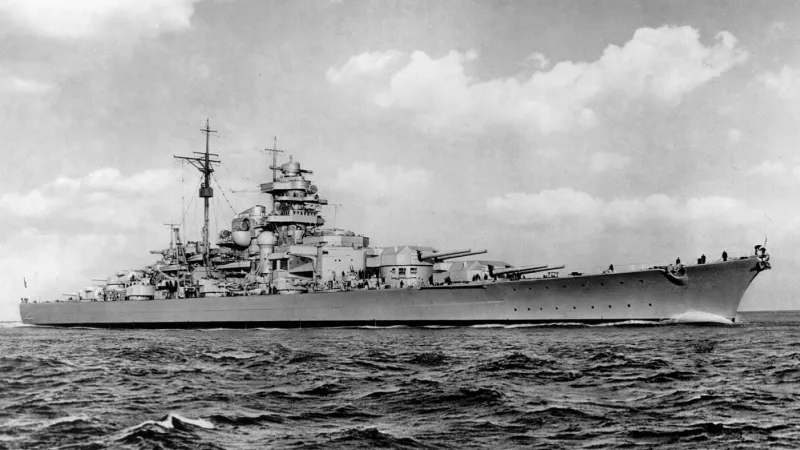
1940
With a length of 251 metres and a displacement of 50,900 tonnes, the BISMARCK was the largest battleship ever built at the time of its completion in 1940. To this day, it remains one of the most iconic warships in maritime history.

1957
Krake class was the project name for the first class of naval ships to be built at Peene-Werft. The work involved a series of nine ships for minesweeping and mine laying operations.
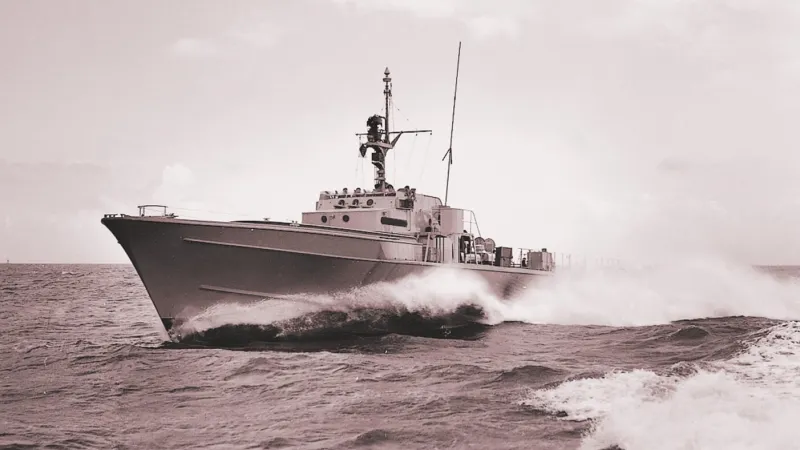
1957
The first ships developed for the German Navy after World War II were of the Jaguar class. This patrol boat class set standards and formed the basis for all future developments of this type of ship. Its light construction makes it fast and highly manoeuvrable while simultaneously maintaining long-range capability.
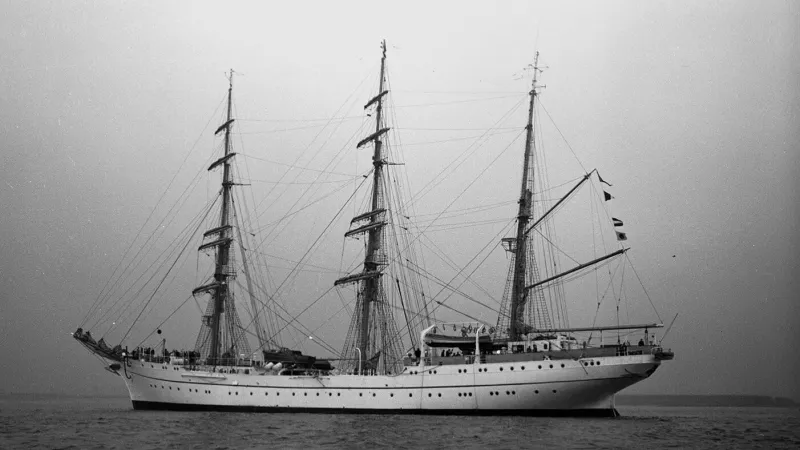
1958
The GORCH FOCK was built by Blohm+Voss and delivered to the German Navy in 1958. It is based on the design of a series of three-mast barques built in the 1930s. Today, the GORCH FOCK serves as a training vessel for the naval academy in Flensburg. Since its commissioning, more than 14,000 cadets have been trained on the GORCH FOCK.

1961
The Zobel class was an advanced version of the Jaguar class and the last class of torpedo speedboats developed for the German Navy. These ships contained a stronger radar function and were equipped with advanced engines. A total of ten units were commissioned between 1961 and 1963.
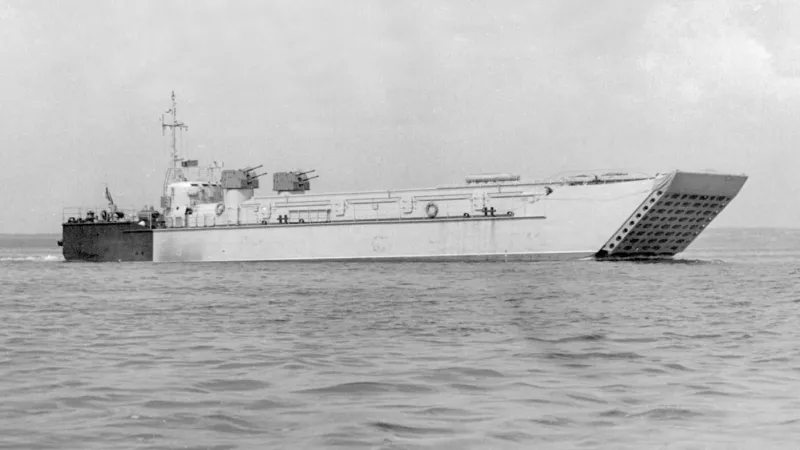
1962
A total of 12 landing craft were delivered to the navy of the German Democratic Republic.

1963
A series of 14 subchasers of the Hai class were developed and built for the navy of the German Democratic Republic. Initially known as submarine fighters, the ships were later classified as small submarine defence ships (UAW). These vessels were the first to be equipped with gas turbines for propulsion.
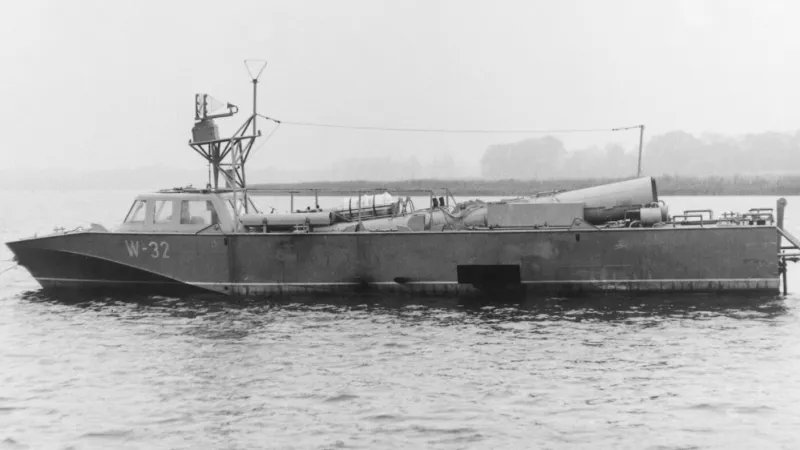
1964
As part of the Iltis class, 30 smaller torpedo speedboats plus prototypes with a light metal hull and a speed of 50 knots were built.
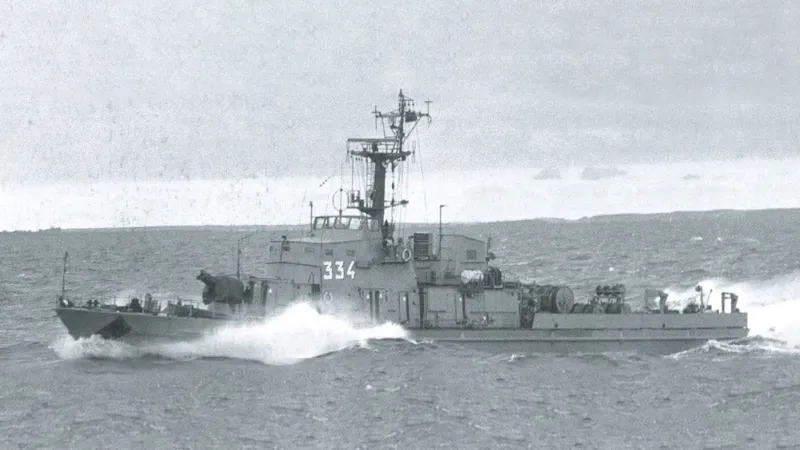
1969
The Kondor class was a class of minesweepers delivered to the navy of the German Democratic Republic between 1969 and 1973. There were three versions built: the prototype of the version 89.0, the Kondor 89.1 with 21 vessels and the modified version 89.2 as Kondor II with 30 vessels. They were built to protect coastal areas from naval minefields and additionally equipped to place their own mines and water bombs.
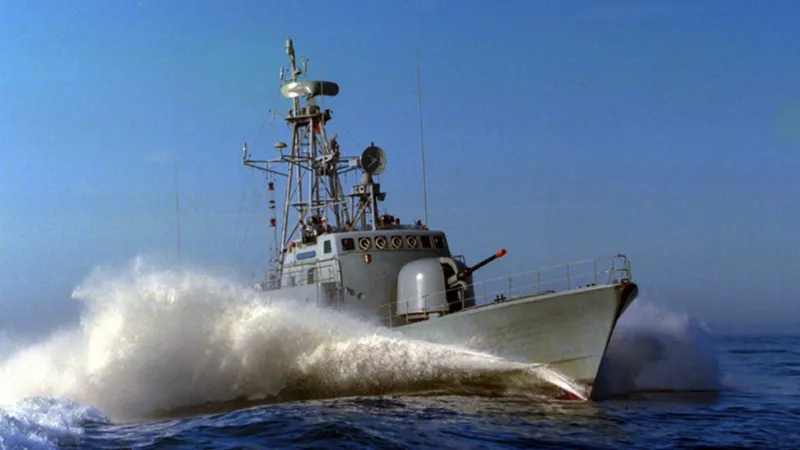
1972
The Tiger class was a class of 20 missile boats used by the German Navy. They were equipped with four anti-ship missiles and advanced electronic capabilities and were designed to replace the Jaguar class vessels.
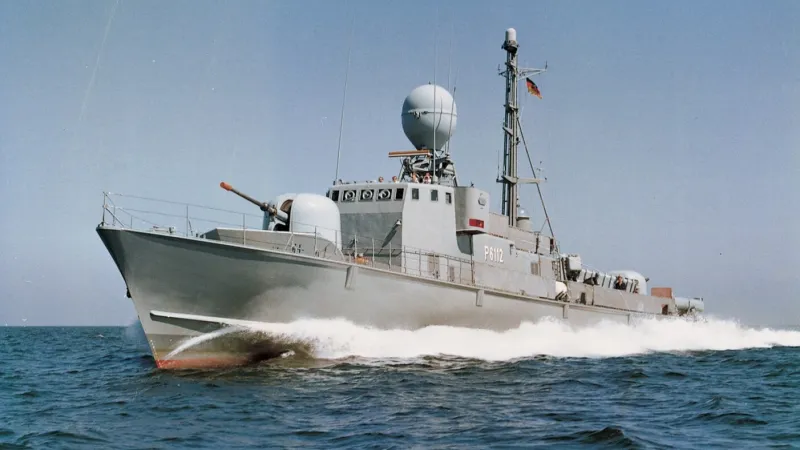
1976
The Albatros class was a series of ten 58-metre-long missile boats developed for the German Navy. They were designed as a platform for anti-ship missiles and powerful artillery and contained additional space to meet the increasing demand for electronic warfare capabilities.
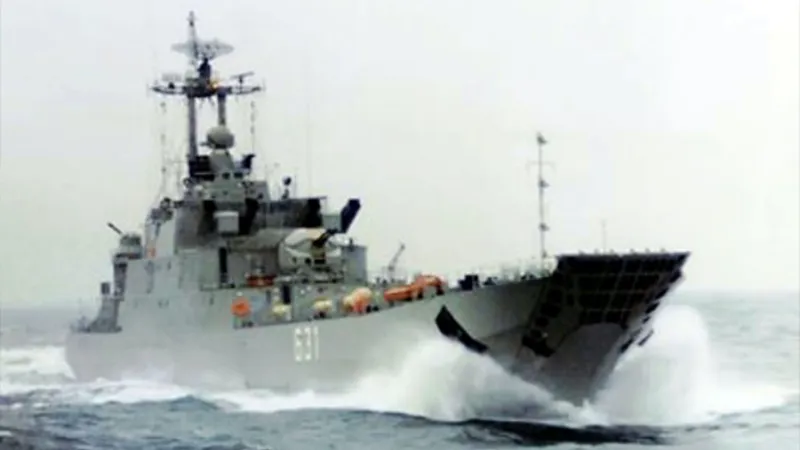
1976
A total of 12 landing ships were delivered to the navy of the German Democratic Republic between 1976 and 1979. These vessels were able to carry up to 280 soldiers and seven tanks and were specifically designed for extensive amphibious warfare in the North and Baltic Seas.

1981
The 28 units of the Parchim class corvettes were built by Peene-Werft, and 16 were delivered to the navy of the German Democratic Republic. To serve its main purpose, namely anti-submarine warfare, the Parchim class was equipped with a sonar system and a versatile weapon system consisting of torpedo tubes and depth charges.
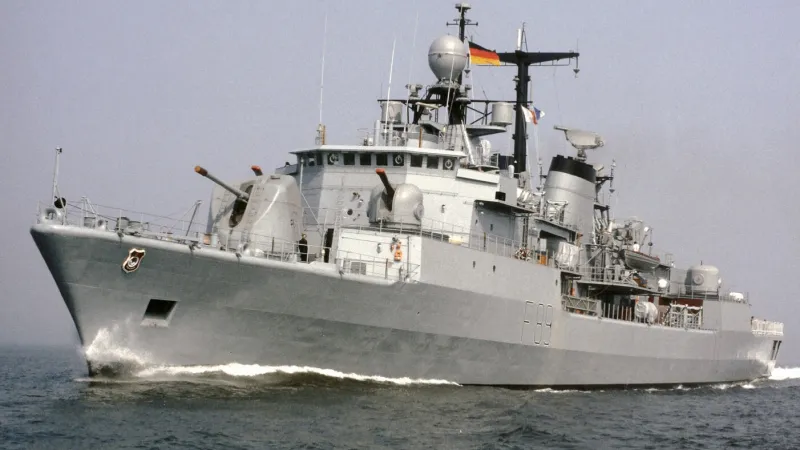
1982
The world-renowned MEKO design concept (multipurpose combination) is based on the modularity of armament, electronics and other equipment and was established to simultaneously ease maintenance and reduce costs. In 1982, the first MEKO frigate ARADU was delivered to the Nigerian Navy. A large number of different models have been built applying the MEKO technology. The navies of Argentina, Germany, Greece, Nigeria and Turkey are among the many customers.

1982
The German Navy received the F 122 class frigates built by Blohm + Voss, the RHEINLAND PFALZ and the KÖLN. These frigates were developed by Bremer Vulkan to fulfil escort functions with particular regard to anti-submarine warfare. According to current knowledge, they were the first ships in the German Navy with a CODOG drive.
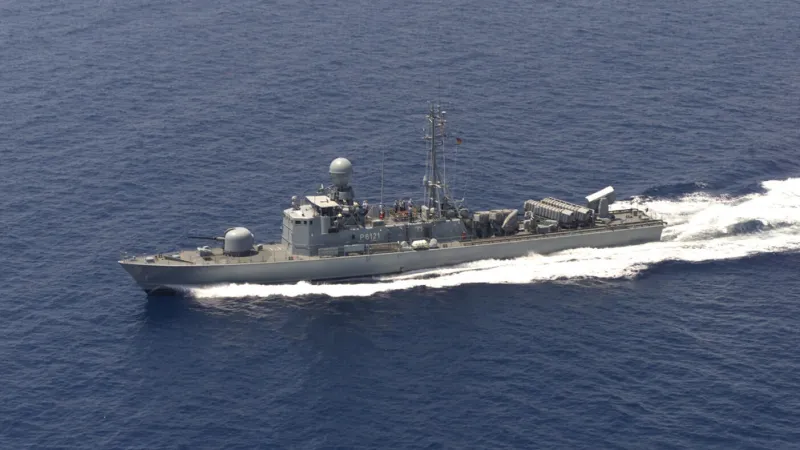
1982
The type 143A Gepard class was a class of missile-bearing, fast-attack craft built for the German Navy. It is an evolution of the Albatros class, the main difference being the replacement of the second 76 mm gun by the RAM system in the aft of the ship. After the addition of the Braunschweig class corvettes to the fleet, the remaining four Gepard class missile boats were gradually decommissioned by the German Navy.
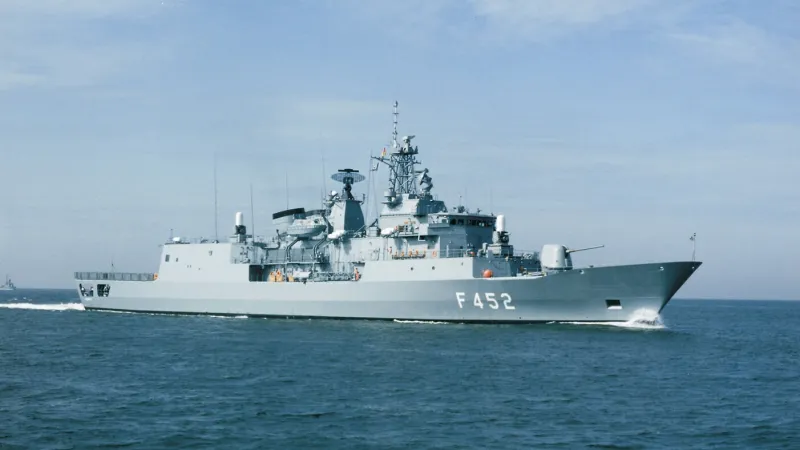
1987
Provided with numerous installation openings, the MEKO 200 is laid out to accommodate a variety of weapon systems to be selected by the customer. The first of four ships was delivered to the Turkish Navy in 1987. Ten years later, the first ship of the Barbaros class was delivered, an updated version of the Yavuz class.

1990
The Sassnitz class fast-attack crafts were the first speedboats manufactured and designed by Peene-Werft in Wolgast to feature the planing operation mode. They were originally planned as an export product for the Soviet Union and its allies. Due to the unification of Germany, plans changed, and three ships are now operated by the Polish Navy (Orkan class).

1992
The four Hydra class frigates of the Hellenic Navy of Greece are 3,200-tonne frigates of the MEKO 200HN design. With the delivery of the first of the four ships, Blohm+Voss set a record: the hydra class was delivered only 40 months after the entry into force of the construction contract. This was the shortest delivery time at the time for a frigate of that size. Moreover, with this order, the shipyard also took responsibility for the first time for the integration of a VLS (vertical launching system) and a towed sonar.

1993
The MJ 332 mine countermeasure vessels are made out of non-magnetic steel and share their hull, machinery and superstructure with the Type 343 Hameln class ships. Their main purpose is the localisation and destruction of naval mines. The first of twelve ships was delivered to the German Navy in 1993.

1994
The first of four F123 Brandenburg class frigates was built by Blohm+Voss and commissioned in 1994. While primarily designed to carry out anti-submarine warfare, these ships were equally capable of anti-air defence and surface-to-surface warfare.
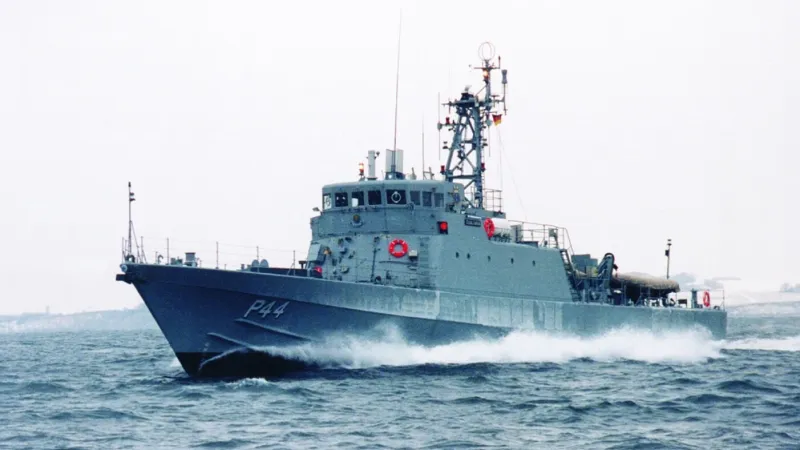
1995
Six 46-metre-long patrol boats were built for the Brazilian Navy. Their MTU twin engine accelerates them to a top speed of 25 knots.

1998
Provided with numerous installation openings, the MEKO 200 is laid out to accommodate a variety of weapon systems to be selected by the customer. The first of four ships was delivered to the Turkish Navy in 1987. Ten years later, the first ship of the Barbaros class was delivered, an updated version of the Yavuz class.
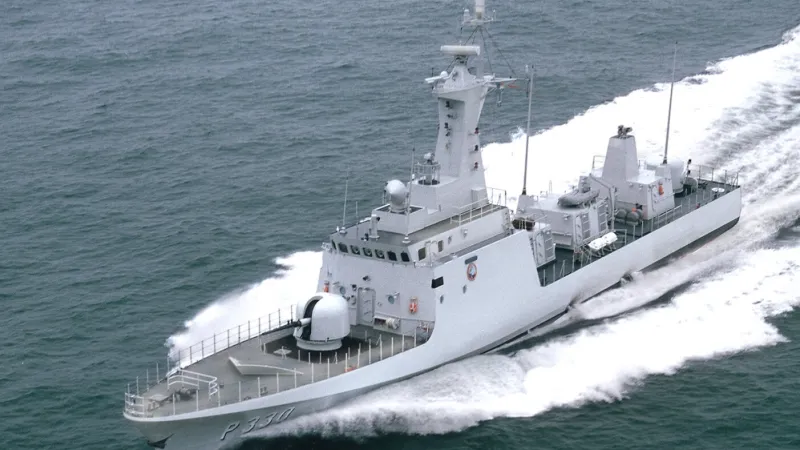
1998
The Kılıç class is one of the fast patrol boat classes of the Turkish Navy. These fast patrol boats have a specially developed superstructure and mast for low radar cross section. Two were built by Lürssen in Germany; the remaining seven were built in Turkey.
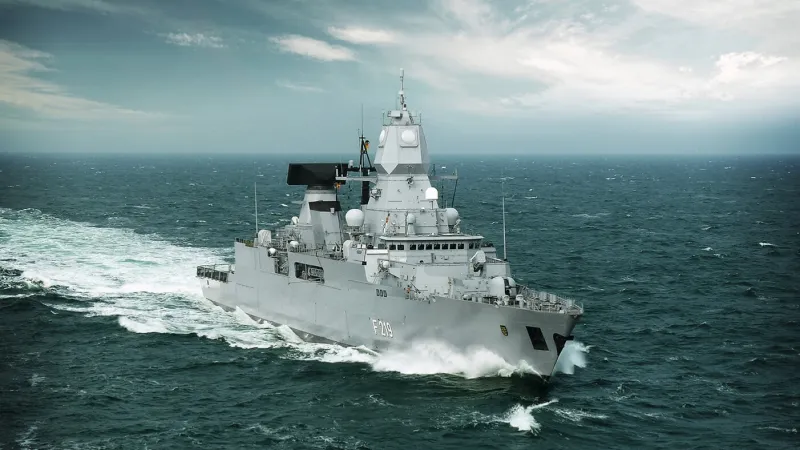
2002
The design of the F124 Sachsen class frigate is based on the F123 Brandenburg class. The class incorporates an advanced multifunctional APAR radar and a SMART-L long-range radar, as well as a VLS launching system to launch SM2 missiles which turns this vessel into Germany’s latest class of highly advanced air-defence units.

2002
The Berlin class naval support vessels are the biggest ships of the German Navy and were put into service between 2001 and 2013 by a consortium including Lürssen.
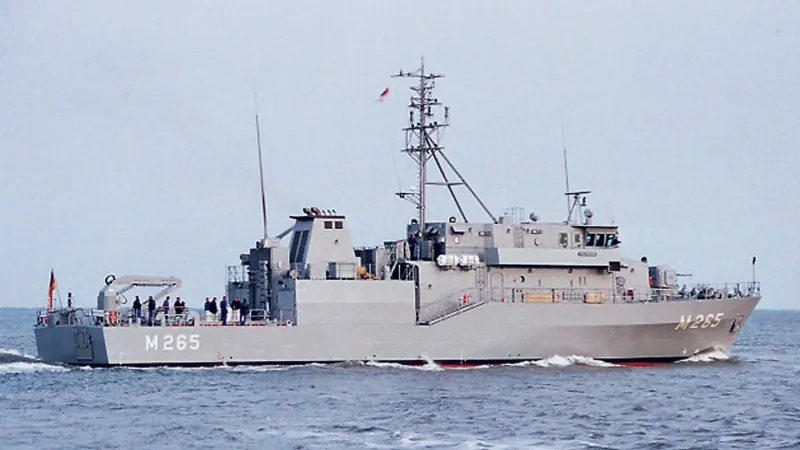
2003
The Alanya class is a class of six mine countermeasure vessels built for the Turkish Navy. This class is a slightly modified version of the Frankenthal class. The first vessel was built in Germany, while later units were constructed in Istanbul.

2008
These ships are German corvettes, excelling in their tasks of showing a presence in the North and Baltic Seas, surveillance, and naval warfare, as well as coordination and management of various missions such as embargo operations. This project is an early example of cooperation between Lürssen and Blohm+Voss.
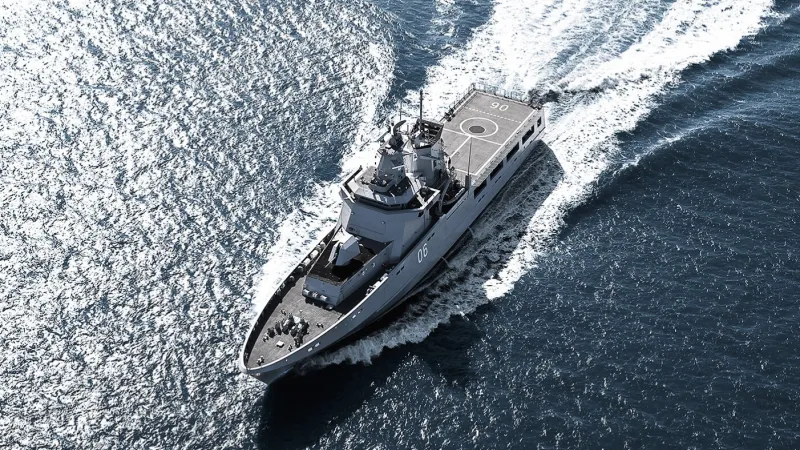
2010
The Darussalam class is a class of four offshore patrol vessels constructed for the Royal Brunei Navy. They are the largest and most capable ships of the Royal Brunei Navy and often participate in international naval exercises. Their durable and robust design gives them outstanding stability even in heavy seas.

2012
These ice-strengthened multipurpose coastal patrol boats were built for the Swedish Coast Guard and delivered in 2012 and 2013. Their main missions include environmental protection, coastal patrol, life-saving missions, emergency towing and firefighting at sea.
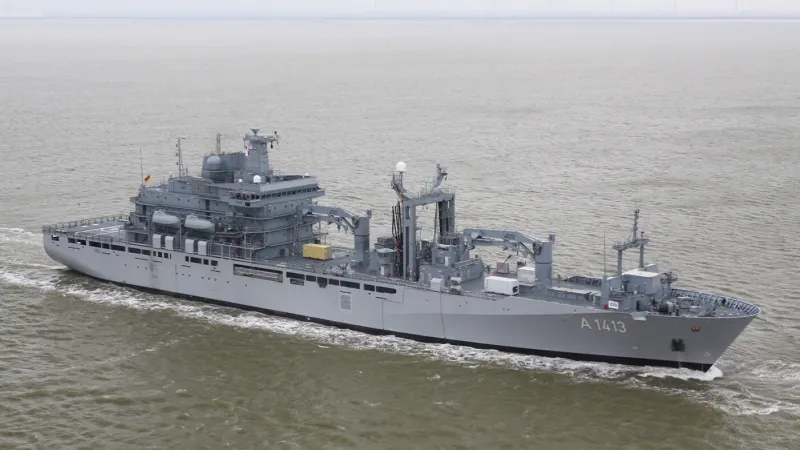
2013
The Berlin class naval support vessels are the biggest ships of the German Navy. They are being used for logistical and medical support and are equipped to deliver goods at speeds of up to 20 knots. With a length of 173 metres and a displacement of 20,900 tonnes, BONN was the third ship in this class. It was built and commissioned in 2013 by ARGE EGV, a consortium including Peene-Werft.
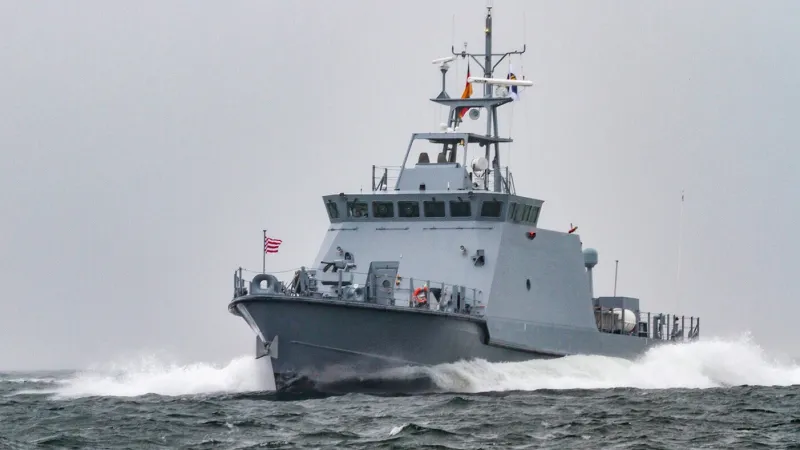
2016
From 2016 onwards, a total of 24 offshore patrol boats were built at Peene-Werft. These highly versatile boats are ideal for border patrol surveillance, critical infrastructure and fishery protection.
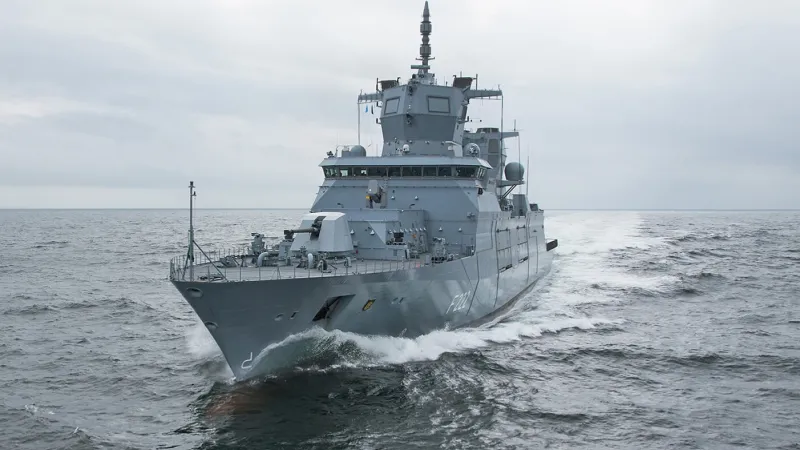
2019
The F125 class frigates are a series of four frigates built for the German Navy to replace the F122 class frigates. They have an advanced-stealth hull and are equipped with a modular configuration model to adjust the vessel for a variety of high- and low-threat scenarios. A range of non-lethal weapons was additionally installed to better suit the frigates for future peacekeeping missions.

2020
The OPB 40 offshore patrol boats are highly versatile and ideal for border patrol surveillance, as well as infrastructure and fishery protection.
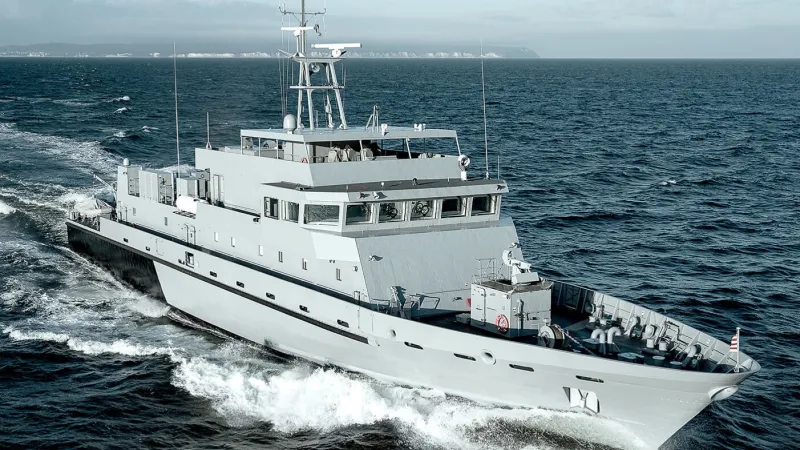
2021
The TS 60 is a coastal patrol boat for EEZ control and surveillance, border patrol, and boarding operations, as well as infrastructure and fishery protection.
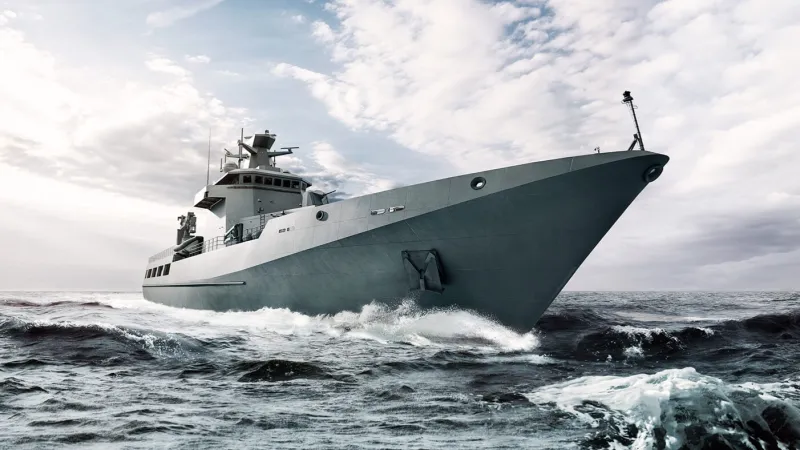
Under Construction
In 2017, Lürssen was selected as the prime contractor and designer for the Arafura class offshore patrol vessel programme: a series of 12 vessels for the Royal Australian Navy to be built in Australia between 2019 and 2030 by an Australian workforce with Australian resources.

Under Construction
The Köln class is a series of five corvettes currently being built for the German Navy by ARGE K 130, a joint venture led by Lürssen. These ships will be delivered between 2023 and 2025 and are an updated version of the Braunschweig class corvettes, which were commissioned between 2008 and 2013.
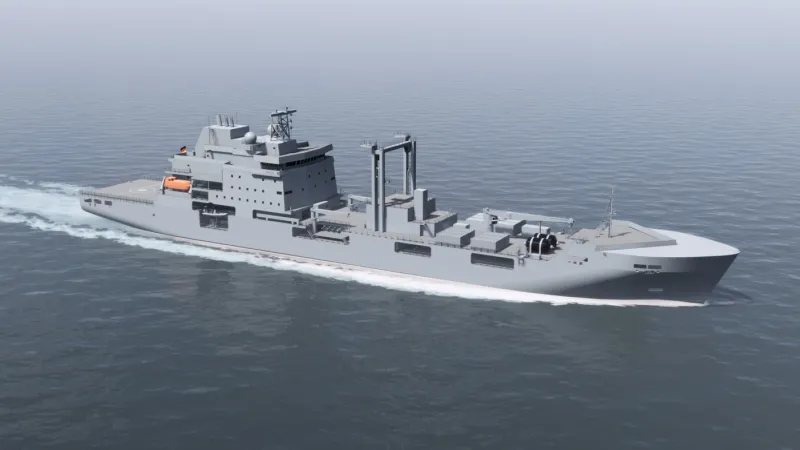
Under Construction
In 2021, Lürssen was selected to build two new replenishment oiler (MBV707) for the German Navy. The delivery of the first ship is planned for 2025. The 170-metre-long double-hull tankers with a crew of around 65 will replace the two previous RHÖN class units.
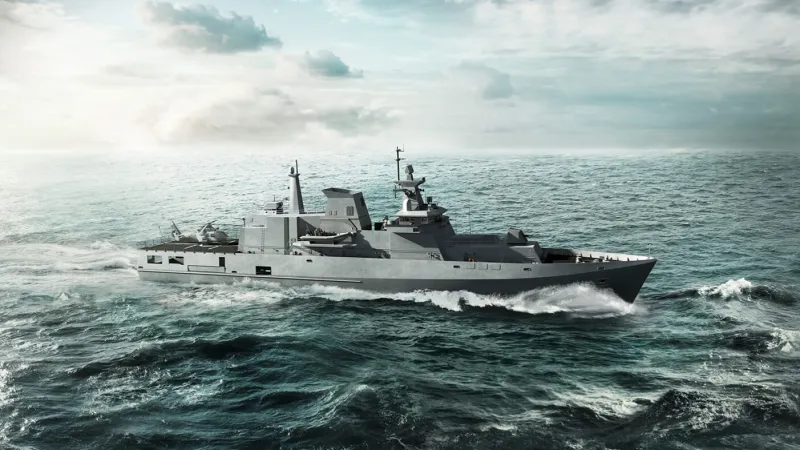
Under Construction
In 2020, Lürssen signed a contract to build two corvettes for the Bulgarian Navy. The 90-metre-long ships are being built under the leadership of NVL at the MTG Dolphin shipyard in Varna at the Black Sea. The vessels are predestined for tasks as part of international alliance missions by NATO and the EU.

Under Construction
In 2020, Blohm+Voss was selected as a subcontractor to build the next generation of frigates for the German Navy. This project is led by DAMEN and based on a fruitful cooperation of Blohm+Voss, DAMEN and Thales.This type of ship is designed to operate in high-threat scenarios such as naval warfare. It is further able to accommodate different mission modules to ensure the frigates are always optimally equipped for their next tasks. The delivery of the first vessel is planned for 2028.
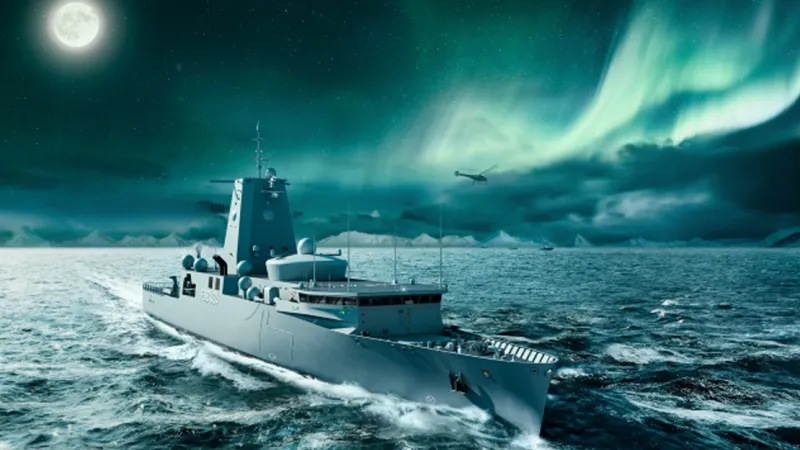
Under Construction
In 2023 the starting signal was given for the implementation phase of three new intelligence vessels for the German Armed Forces. The 132-metre-long units will replace the current OSTE-class vessels, and the German Armed Forces will use the vessels for improved reconnaissance and information gathering missions. They are equipped with state-of-the-art sensor technology and meet the latest requirements of future-proof naval vessels.
About NVL
We invite you to learn more about who we are and what we stand for at NVL. If you have any questions, please don't hesitate to contact us.

